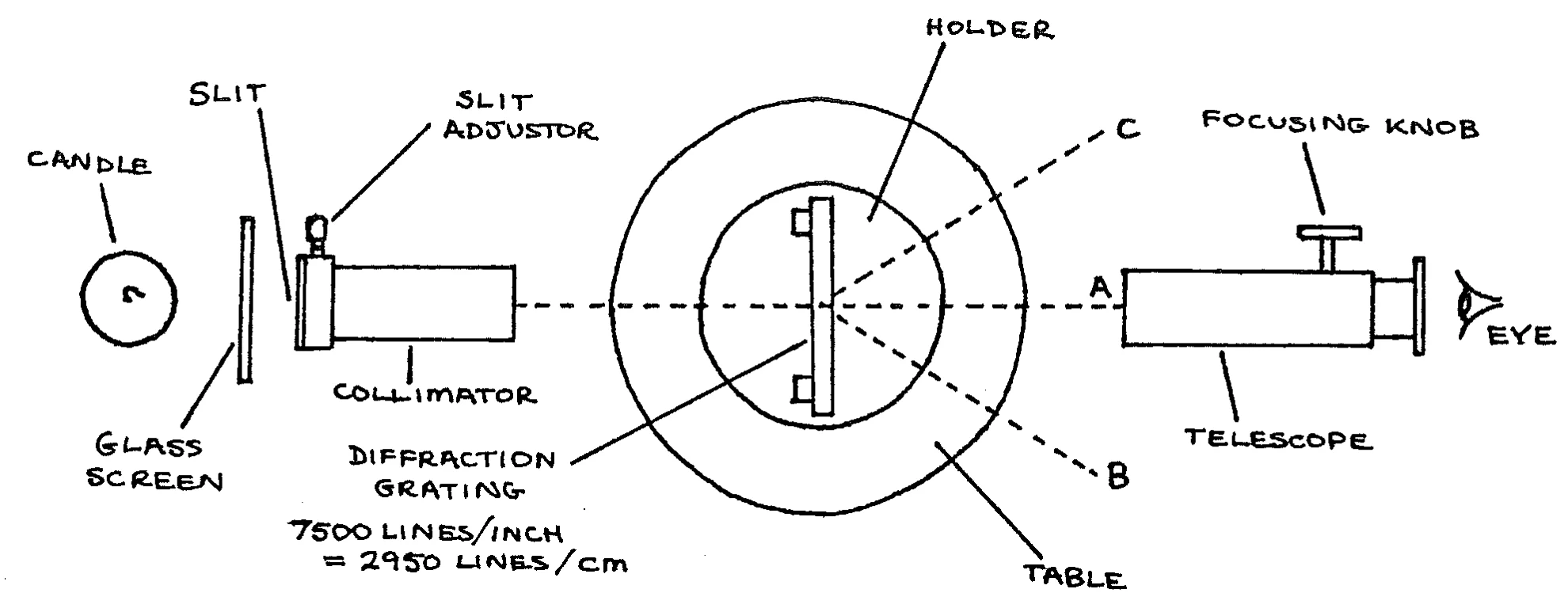1. Introduction of the experiment.
2. Aim of the experiment.
3. Tools of the experiment.
4. Steps and methods of the experiment.
5. Parameter, Theory and Final law of the experiment.
6. Medical application and advantages of the experiment.
A diffraction grating is an optical element that divides(disperses) light composed of lots of different wavelengths(e.g., white light) into light components by wavelength. The simplest type of grating is one with a large number of evenly spaced parallel slits.
–Determination of the wavelength of the light

· Spectrometer
· Diffraction Grating
· Lamp

1-Experiment should be performed in dark room.
2-Place a light source in front of the collimator and turn it on.
3-Place the telescope in front of the collimator, look through the telescope and close the slit of collimator to the light source until the image of slit is clearly seen in the center of the vision field.
4-Fix the grating on the table of spectrometer with its plane perpendicular to the optical axis.
5-Rotate the telescope until the cross-hair matches the center of the line.
6-Read the veneer’s scales with magnifying glass.
To read the angle, first find where the zero point of vernier’s scale. Then, read the value which is located directly below the zero point on the graduated plate. If the zero point locates in between two values, depend the lower value.
Parameters:
S: is grating spacing= (1/N)
N: is the number of lines per (cm)
n: number of order.
(αR – αL): The difference between the telescope vernier angles.
θ: the angle of the order diffraction.
S sin θ = n λ
6 -Medical Application:
1-For glucose monitoring in diabetic patents .
2-To measure changes in chemicals and enzymes ,as it is very difficult to monitor these aspects of human body.
3- Use wavelength near IR to analyzed metabolites and proteins .
4-Tt is used to identify cancerous liver cells.